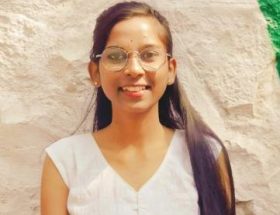Rafiul Alom Rahman
 A few weeks ago, I attended a panel discussion on competing identities in the northeast, where Kishalay Bhattacharjee, a reputed journalist and author, talked about the importance of story-telling. As a journalist who has been reporting from India’s northeast for so many years now, Kishalay’s words were more than news stories that reach our TV sets. He talked about stories that hardly see the light of the day, stories that are conveniently kept out of newsrooms and stories that grow on us as we take on the task of writing stories ourselves.
A few weeks ago, I attended a panel discussion on competing identities in the northeast, where Kishalay Bhattacharjee, a reputed journalist and author, talked about the importance of story-telling. As a journalist who has been reporting from India’s northeast for so many years now, Kishalay’s words were more than news stories that reach our TV sets. He talked about stories that hardly see the light of the day, stories that are conveniently kept out of newsrooms and stories that grow on us as we take on the task of writing stories ourselves.
While I was researching for this paper, I came across staggering statistics. As a literature student, I have often ridiculed facts that came coded in numbers. For me ‘truth’ was more than mere statistical data. But now, my own notions were being challenged as I tried to cull down statistical figures to tell a story that hardly gets told in the popular media.
When the Assam riots took place, the popular discourse in the media was that of ”illegal Bangladeshi immigrants” grabbing the lands of ”indigenous Bodo tribals”. Politicians and the ruling class in Assam blamed it on illegal infiltration. Student groups like the All Assam Students’ Union (AASU) vowed to stand with their ”Bodo brothers” in a fight to shoo away ”illegal immigrants” from the ‘Assamese soil’. It’s a different story that today when there is a demand for a separate Bodoland state, the AASU has distanced itself from Bodo groups.
A lot has been spoken about the Bodoland movement, the Kokrajhar riots and illegal infiltration across the Indo-Bangladesh border. Illegal infiltration is a truth that nobody can deny. But is it the only truth that should be bothering us, while we keep our eyes and ears shut to other equally important and perhaps, more grievous concerns, that the northeast in general and Assam in particular are faced with?
I wish to talk about the Char areas (river islands) that account for 4.6 per cent of the total land area of Assam. The Char-dwellers represent 9.37 per cent of the state’s population while they possess only 4 per cent of Assam’s agricultural land. The density of population in these areas is 690 persons per sq. km. Perhaps, these figures would not have been so important to us if the political discourse around illegal infiltration in Assam had taken into account those who live on the margins. Mostly Bengali-speaking Muslims, theirs is a saga of devastation and loss.
As Gorky Chakraborty observes,
”Under these conditions, on one hand, due to the absence of alternative source of livelihood there is enormous pressure on agricultural land and on the other, the absence of innovation and lack of institutional support and continuous problem of flood and erosion has further compounded the problem resulting in falling yields and presence of disguised unemployment in these areas.”1
The Brahmaputra or the ‘Luit’ in Bhupen Hazarika’s words occupies an important place in Assamese literature, music and everyday lives. However, people in Assam are aware of the fury of the mighty Luit, whose worst victims are often the Char-dwellers. The Assam Water Resources Department reveals that the average annual damage since 1954 has been over Rs 124 crore, the estimated average annual erosion rate has been 8,000 hectares, which has affected more than 90,700 families spread over 2,534 villages.2

This summer, when I visited my ancestral village in Dhubri, I saw how the Brahmaputra had encroached upon people’s homes. Many people had been forced to leave the village for greener pastures. However, the worse tales were of those who had once occupied an influential position in the village, whose land and livestock were washed away by the river, and who, were now left in a state of abject poverty and helplessness. An old woman cursed the Brahmaputra without realizing that the river would not understand her woes. She cursed the world.
This sense of dislocation, rupture and collective nostalgia reflects beautifully in a song by Pratima Pande Barua:
Baalu’t til-til ponkhi re kaande baalut’e poriyaa
Aar Gauripuriya mahout kaande o’, shokhi
Ghar-baari cchaariya
The sandpiper cries in the sand, while
The mahout from Gauripur longs for his home
The Assam State Char Areas Development Authority and the Directorate of Char Areas Development, Assam conducted two significant surveys during 1992-93 and 2003-04.3 During 1992-93, 48.89 per cent of the total population in the Char areas resided below poverty line. Currently, 67.89 per cent of the total population in char areas is below the officially determined poverty line, while for the state as a whole it is 36.09 per cent and for India, 26.10 per cent. Between 1992-93 and 2002-03, their literacy level has risen from 15.45 to 19.31 per cent, which is extremely low. Whereas the literacy rate in Assam is 53.79 per cent and for the rural areas, it is 50.48 per cent respectively.

Gorky Chakraborty considers information-deficit as one of the most important factors leading to social exclusion of Char-dwellers.4
”It gets manifested when the char-dwellers migrate in search of livelihood options. Their attire, traits, behavior, language and religion on one hand and the lack of knowledge on the part of the people of the mainland about the chars on the other, ultimately leads to a scenario, where these char dwellers are straightaway labeled as Bangladeshis or illegal immigrants. It leads to further exclusion. Here, the role of the third estate as well as organizations from the mainland areas, are less than expected. Their myopic vision “produce narrow citizens who have difficulty understanding people different from themselves, whose imaginations rarely venture beyond their local setting”(Nussbaum 2003: 14). Due to which, they have a tendency to dump them as illegal immigrants, without displaying the courage to trace the root cause of their migration from the char areas. This not only creates mistrust, suspicion and discord among the population groups, but also generates a public opinion which becomes unfavorable for the inclusion of the char dwellers into the mainstream. Any additional public expenditure gets highlighted as feeding the Bangladeshi’s at the cost of depriving the Indian nationals. This self-imposed false consciousness of the mainland organizations and ‘enlightened’ civilians leads to further social exclusion of the char dwellers in Assam.”
Today, it is not only the fate of a Char-dweller, but of many other Bengal-origin Muslims who are constantly faced with an identity crisis. Newspaper reports say that Adil Hussain’s (the Bollywood actor and theatre stalwart) niece is a ‘D’ voter5, while Baharul Islam (another theatre activist) complains of the harassment that his relatives face for not being ‘Assamese enough’ in their attire and language6.
The Illegal Migrants (Determination by Tribunals) Act (IMDT Act) defines foreigners as those who settled down in Assam after March 25, 1971. Under the IMDT Act, the onus of proving citizenship was on the accuser and not the accused (‘foreigner’). It was struck down by the Supreme Court of India in 2005. The Supreme Court, while striking down the IMDT Act, 1983, had directed that all cases pending before the tribunals under the IMDT Act shall stand transferred to the tribunals constituted under the Foreigners (Tribunals) Order, 1964. Under the Foreigners (Tribunals) Amendment Order as well as the Foreigners (Tribunals) Order, 1964, the onus of proving citizenship is on the suspected ‘foreigner’.7

One of the clauses of the Assam Accord of 1985 was that the National Register of Citizens (NRC) would be updated to include all the Assam inhabitants and their descendants on or before March 25, 1971, but no government has done so until now. Muslims fear harassment in the absence of NRC and ID cards.8
‘Wounded Identities’, a documentary film by Lucknow-based Professor, Roli Misra highlights the issue of ‘D’ voters. The film positions the dominant AASU-BJP discourse on illegal infiltration in Assam vis-à-vis issues concerning ‘D’ voters, river erosion induced displacement, internal migration, etc. It was in 1998 when the Election Commission of India issued an order saying that a person who is unable to provide proof of his/her citizenship during the enumeration for the electoral rolls shall be marked as doubtful voters (‘D’ voters). The ‘D’ voters are determined by special tribunals under the Foreigner’s Act, and the person declared as ‘D’ voter is not given the elector’s photo identity card.
Assam government has set up 36 foreigners’ tribunals to resolve the issue9, out of which only a few are functioning. The fact that there is a huge number of ‘D’ voter cases and that the tribunals take a long time to determine a ‘foreigner’, Muslims (as well as Bengali Hindus marked as ‘D’ voters) have been put to considerable harassment and trauma. There are families where out of four siblings one is marked as a ‘D’ voter.
When we tell a story, we carry with us a baggage of other identities than that of the story-teller alone. If a section of the Assamese/national media goes berserk over ‘Bangladeshis’ every now and then, we have to also understand that many of those ‘Bangladeshis’ are created by the media and those who fund it. As school kids when we used to ferry down the Brahmaputra, my brother would gesture at the broken huts, makeshift houses in the river islands – calling them the Taj Mahal or the White House. Today, when I look back, I realize those huts and broken houses were indeed monuments that commemorated poverty, hunger and disease.
This paper is an attempt to tell one story among the many stories that prevail in the Northeast, but are, often sidelined by hegemonic discourses in the media – on war and friendship, on hope and despair, on ‘insiders’ and ‘outsiders’. The day we decide to live with a single story, we will call for doom.
~
(The author wishes to thank Prof Gorky Chakraborty, Institute of Development Studies, Kolkata for his valuable support.)
~
[1] Gorky Chakraborty in ‘Isolation to Desolation: Analyzing Social Exclusion Among the Char Dwellers of Assam’.
[2] The ‘Ubiquitous’ Bangladeshis, Gorky Chakraborty, EPW, September 22, 2012.
[3] See ‘Isolation to Desolation: Analyzing Social Exclusion Among the Char Dwellers of Assam’ by Gorky Chakraborty.
[4] Gorky Chakraborty in ‘Isolation to Desolation: Analyzing Social Exclusion Among the Char Dwellers of Assam’.
[5] ‘Not a movie plot, a real blot: Adil’s niece termed ‘D’ voter’, Arup Saikia and Abdul Gani, Seven Sisters Post.
[6] ‘The agony of being labelled a ‘Bangladeshi’ in Assam’, Ratnadip Choudhury, Tehelka, October 19, 2013.
[7] Story of Two Orders, Sushanta Talukdar, December 16-29, 2006, Frontline.
[8] ‘IMDT Act and Immigration in North-Eastern India’, Walter Fernandes.
[9] ‘Deleting Assam voters on religious basis not possible: Centre tells SC’, August 10, 2012, The Hindu.
~~~
Rafiul Alom Rahman is a student of English literature in Zakir Husain Post Graduate Evening College. He can be reached at rafiul.delhi@gmail.com.
Pictures courtesy: Rafiul Alom Rahman.










